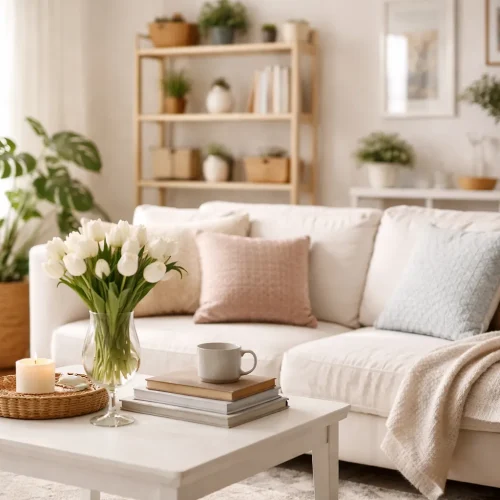
In a cultural moment saturated by images, screens and instant visual stimuli, abstract art—bold, ambiguous, and open-ended—maintains a unique power. For modern collectors, abstract works provide more than decoration: they engage the imagination, communicate emotional depth, and often offer surprising investment potential. In Australia and beyond, interest in contemporary abstract Australian art is part of a wider movement: collectors are rediscovering the freedom and emotional resonance that abstraction offers.
Below, we explore several key reasons why abstract art still holds appeal for today’s discerning collectors.
Emotional Resonance & Personal Interpretation
One of abstraction’s greatest strengths is that it invites the viewer’s subjective response. Unlike representational art, which depicts familiar forms and narratives, abstract works leave room for individual interpretation. A sweep of colour, a tension between forms, or a textured surface can evoke different feelings and thoughts for different viewers. This open canvas invites engagement, reflection and introspection.
This emotional flexibility means that as a collector’s tastes or life circumstances evolve, so too can one’s relationship with a given piece. It’s not “frozen” in meaning — it can grow with you.
Spatial Presence & Aesthetic Versatility
Abstract works often bring a strong spatial presence. Large-scale paintings can anchor a room, define an atmosphere, and become focal points in contemporary interiors. Because abstract art is less tethered to literal representation, it can adapt to a variety of décor styles—from minimal and modern to more eclectic or layered designs.
Many interior designers and collectors regard abstraction as a bridge between art and environment: it can complement furniture, lighting, architecture, and decorative elements without competing with them.
Innovation, Experimentation & Technical Mastery
Behind many successful abstract works lies refined technique and innovation. Whether the artist is layering pigments, experimenting with materials (mixed media, resin, collage), or manipulating scale, surface or texture, the craft and process often matter deeply to collectors.
Collectors who appreciate the technical underpinnings of art tend to value abstraction because it often exposes the hand of the artist: visible gestures, mark‑making, layering, negative space, and the dance between chance and control.
Cultural Narrative & Market Momentum
Abstract art plays a central role in modern and contemporary art history, so collecting it connects one to a lineage of experimentation—from early 20th‑century pioneers to post‑war abstraction to contemporary innovation. Pursuing works in abstraction is often also a way to engage with ongoing discourse around identity, form, colour, and art’s evolving boundaries.
In recent years, the market for abstract and non‑figurative art has been particularly vibrant. Many collectors see abstraction as having strong potential for appreciation, especially when investing in mid-career or emerging artists whose reputations may grow over time.
Furthermore, research suggests that certain visual attributes—particularly colour harmony and compositional complexity—can influence the pricing of abstract paintings, indicating the market’s sensitivity to aesthetic elements within abstraction.
Emotional & Psychological Benefits
Living with art isn’t just about seeing; it can also affect mood, wellbeing, and the rhythms of everyday life. Abstract works, with their capacity for silence, openness and ambiguity, can offer a meditative respite in busy homes or workspaces.
Moreover, studies in art therapy and environmental psychology suggest that exposure to evocative colour and form can lower stress and stimulate cognitive or emotional reflection. Abstract art, unconstrained by narrative, can serve as a mental palate cleanser—even a space for projection of one’s own thoughts.
Risk and Reward: The Collector’s Motivation
Collecting art always involves some degree of risk. For abstract art, that uncertainty is part of its attraction. Because abstraction is less constrained by genre or literal subject, its appeal can expand across time, style trends and geographical boundaries. A bold abstract piece bought today might resonate differently in five or ten years—and potentially appreciate in value if the artist’s reputation grows.
Many seasoned collectors embrace this tension: the balance between emotional passion and market foresight. Engaging with abstract works means often trusting your instincts, being open to surprises, and accepting that meaning can shift.
Community, Patronage & Collecting as Dialogue
Collectors of abstraction often develop close relationships with artists, galleries and curators. The act of collecting becomes a form of cultural participation and dialogue. Supporting emerging abstract artists helps sustain innovation and can cement a collector’s role within creative networks.
For many collectors, the story behind a work—its genesis, the artist’s journey, exhibitions it has travelled through—matters as much as the piece itself.
In Summary
Abstract art continues to resonate with modern collectors because it offers a rare combination of freedom and substance. It invites personal reading while demanding technical sophistication; it holds space in our environments while engaging our inner worlds; and it straddles both aesthetic and market currents.
If you’re exploring or expanding a collection and are drawn to non‑figurative works, consider placing emphasis not just on visual “wow” factor, but on the depth of process, the artist’s trajectory and how the work resonates with you. And in doing so, you become part of a rich narrative—one that stretches from early modernism to the vibrant scene of contemporary abstract Australian art.












